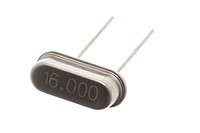
Photo from wikipedia
Abstract (Bi1-xCdx)2Ti2O7 (x = 0.00, 0.02, 0.04, 0.06, 0.08, 0.10 and 0.12) nanoparticles are synthesised using the co-precipitation method. The prepared samples show pyrochlore phase formation except for x = 0.02 and 0.08, where… Click to show full abstract
Abstract (Bi1-xCdx)2Ti2O7 (x = 0.00, 0.02, 0.04, 0.06, 0.08, 0.10 and 0.12) nanoparticles are synthesised using the co-precipitation method. The prepared samples show pyrochlore phase formation except for x = 0.02 and 0.08, where Bi4Ti3O12 appears as a secondary phase. The crystallite size and unit cell volume decrease while the strain and dislocation density increase with an increase in Cd-doping. The vibrational bands corresponding to Cd-O and C = O are Red-shifted, while the H-O-H bending band is Blue-shifted with increasing Cd-doping. The band gap energy for x = 0.00 is found to be 1.78 eV. It increases with an increase in ‘x’ up to 0.06 and then decreases with a further increase in ‘x’ except for x = 0.02 and x = 0.08. The impedance data show non-Debye type relaxation. The pyrochlore phase is found to be non-ferroelectric. However, the samples with x = 0.02 and x = 0.08 having the secondary phase (Bi4Ti3O12) are ferroelectric.
Journal Title: Materials Research Bulletin
Year Published: 2021
Link to full text (if available)
Share on Social Media: Sign Up to like & get
recommendations!